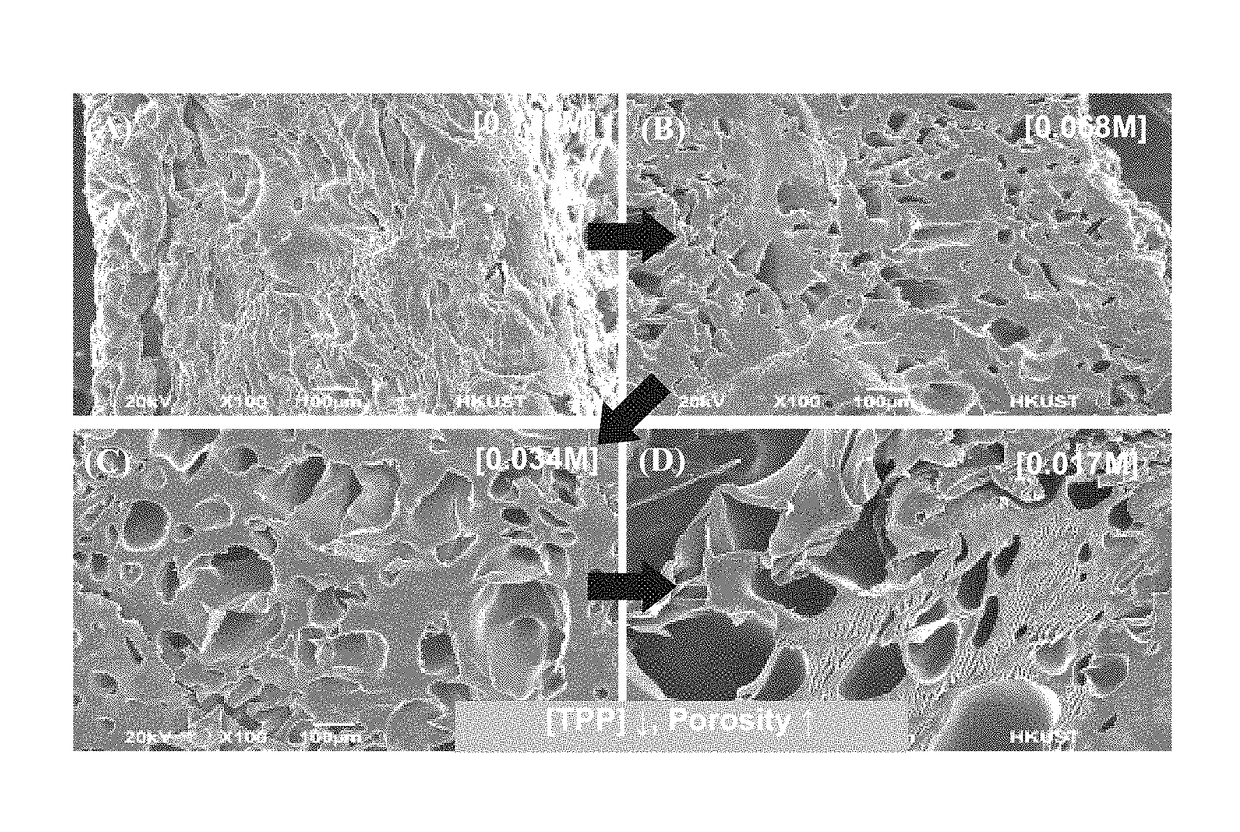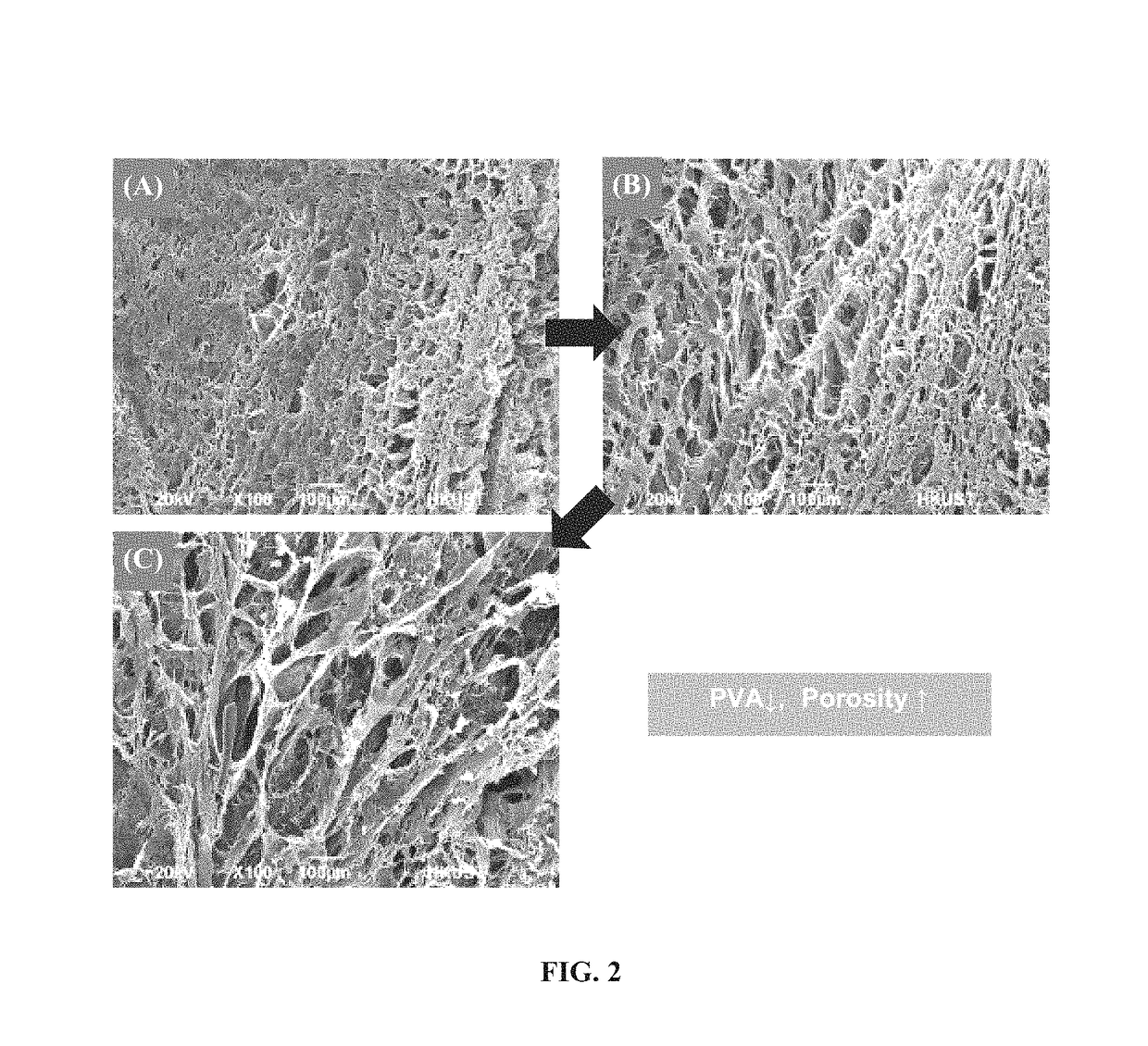Chitosan based high performance filter with self-regenerating ability
a high-performance, filter technology, applied in the direction of physical/chemical process catalysts, other chemical processes, separation processes, etc., can solve the problems of not being able to easily adjust the pore size of conventional filter media to suit various particulates, and most conventional filters are not self-regenerative and require replacement regularly, etc., to achieve effective removal of heavy metals, bacteria and organic pollutants, and removal efficiency
- Summary
- Abstract
- Description
- Claims
- Application Information
AI Technical Summary
Benefits of technology
Problems solved by technology
Method used
Image
Examples
example 1
ing Pore Sizes By Adjusting Crosslinking Degree
[0018]Sodium tripolyphosphate (TPP) is a non-toxic crosslinker used in the present invention to ionically crosslink the chitosan polymer. The amount of TPP added into the chitosan based filter medium has direct impact on the pore size of the filter medium. With the decrease of the TPP amount, the pore size of the chitosan based filter medium increases (FIG. 1). The pore size varies from a few microns to over 100 microns, preferably 5 microns. In this example, 1.8% w / w of chitosan is used.
example 2
ing Pore Sizes By Adjusting Copolymer Amount
[0019]In this example, the pore sizes of the chitosan scaffold can be fine tuned by adjusting the amount of copolymer added. For example, poly(vinyl alcohol) (PVA) is added into the chitosan scaffold to modify its morphology. With decrease of the amount of PVA, the pore size of the chitosan based filter medium increases. PVA is able to fill up the space among crosslinked chitosan so as to minimize the pore size. The range of the pore size can be from a few microns to several hundred microns, preferably 5 microns.
[0020]
TABLE 1The amount of PVA used in the chitosan membrane:PVAChitosanTPPSample No.(wt %)(wt %)(wt %)10.500.320.5020.480.450.5030.240.610.50
example 3
ing Pore Sizes By Using Different Freezing Methods
[0021]The chitosan solution needs to be frozen before freeze drying. The freezing method is one of the determining factors to control the pore size. Taking PVA / chitosan copolymer solution (Table 2) as an example, the chitosan membrane frozen in a normal −20° C. freezer (FIG. 3A) generates much larger pores than that being frozen in liquid nitrogen (about −210° C. to −196° C.) (FIG. 3B).
[0022]
TABLE 2The formula of PVA / Chitosan copolymer solution:PVAChitosanTPP(wt %)(wt %)(wt %)0.500.320.50
PUM
| Property | Measurement | Unit |
|---|---|---|
| temperature | aaaaa | aaaaa |
| particle size | aaaaa | aaaaa |
| pore size | aaaaa | aaaaa |
Abstract
Description
Claims
Application Information
 Login to View More
Login to View More - R&D
- Intellectual Property
- Life Sciences
- Materials
- Tech Scout
- Unparalleled Data Quality
- Higher Quality Content
- 60% Fewer Hallucinations
Browse by: Latest US Patents, China's latest patents, Technical Efficacy Thesaurus, Application Domain, Technology Topic, Popular Technical Reports.
© 2025 PatSnap. All rights reserved.Legal|Privacy policy|Modern Slavery Act Transparency Statement|Sitemap|About US| Contact US: help@patsnap.com



